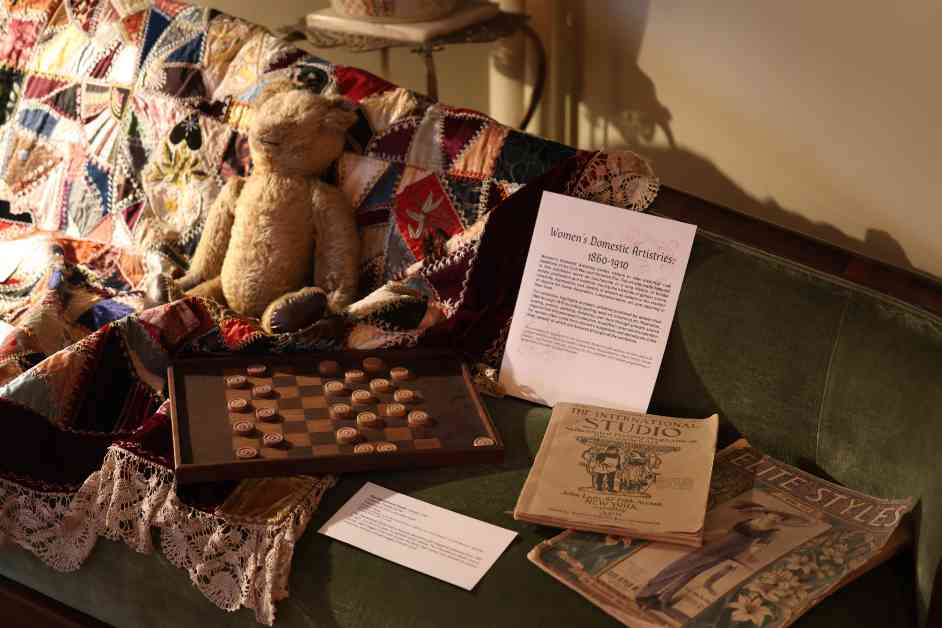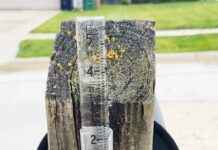In the heart of Ames, Iowa, the Farm House Museum recently hosted the thought-provoking exhibit “Women’s Domestic Artistries.” This showcase of artifacts delves into the rich history of female artists, highlighting their often overlooked and undervalued contributions to the art world. Despite the strides made in recognizing women artists, disparities in representation and recognition persist, shedding light on the systemic factors that continue to shape the artistic canon.
Unveiling the Untold Stories
For centuries, art history has been a narrative dominated by male voices, sidelining the achievements of women artists. Wendy Parker, a seasoned professor of art and visual culture, alongside Nancy Gebhart, an esteemed art and visual culture lecturer, have made it their mission to challenge this status quo. Parker, drawing on her deep-rooted passion for art history, reflects on the profound impact of women artists throughout history. She emphasizes the critical role of these creators in shaping the artistic landscape, long before science or religion took center stage.
The historical presence of women in art is undeniable, yet their works have often been dismissed or erased from mainstream discourse. Parker laments the oversight by those who shaped the artistic canon, choosing to ignore the talents of women artists. The legacy of Linda Nochlin’s groundbreaking essay, “Why Have There Been No Great Women Artists?” looms large in this conversation. Parker underscores the significance of Nochlin’s work in unpacking the deep-rooted biases and barriers faced by women in the art world.
Breaking Down Barriers
Despite increasing recognition, women artists continue to grapple with institutional barriers that impede their artistic journey. Parker draws attention to the tragic story of Artemisia Gentileschi, a talented artist whose career was marred by sexual violence. The impact of Gentileschi’s traumatic experience on her reputation and economic prospects highlights the pervasive nature of gender-based discrimination in the art world.
Gebhart sheds light on the economic disparities that plague women artists, emphasizing the undervaluation of their work in comparison to their male counterparts. The perception that women’s art lacks long-term investment potential perpetuates a cycle of devaluation and underrepresentation. Gebhart underscores the societal expectations of unpaid labor placed on women, creating a double burden that hinders their creative pursuits.
The time and resources required for artistic endeavors often clash with societal norms and expectations, limiting women’s ability to fully engage in their craft. Gebhart echoes Nochlin’s observations on the internalized demands of a male-dominated society that can stifle women’s creative expression. The pervasive impact of traditional gender roles on women’s artistic freedom underscores the need for systemic change in the art world.
Celebrating Women in Art
Despite these challenges, women artists continue to push boundaries and make significant contributions to the art world. Gebhart highlights the iconic figures of Betye Saar and Faith Ringgold, whose groundbreaking work deserves widespread recognition. She recounts the stark contrast in attendance between a Monet exhibit and a showcase by contemporary artist Bisa Butler, underscoring the ongoing disparities in visibility faced by female artists.
As the art world grapples with issues of representation and recognition, Parker emphasizes the universal nature of art as a form of human expression. She challenges the notion that art is reserved for privileged men or the stereotypical image of the starving artist, asserting that art is a fundamental aspect of human existence. By amplifying the voices and narratives of women artists, Parker and Gebhart strive to reshape the artistic landscape, creating a more inclusive and equitable space for all creators.
Your donation will support the student journalists of the Iowa State Daily. Your contribution will allow us to purchase equipment, send our student journalists to conferences, and offset their cost of living so they can continue to produce top-tier journalism at the Iowa State Daily.









